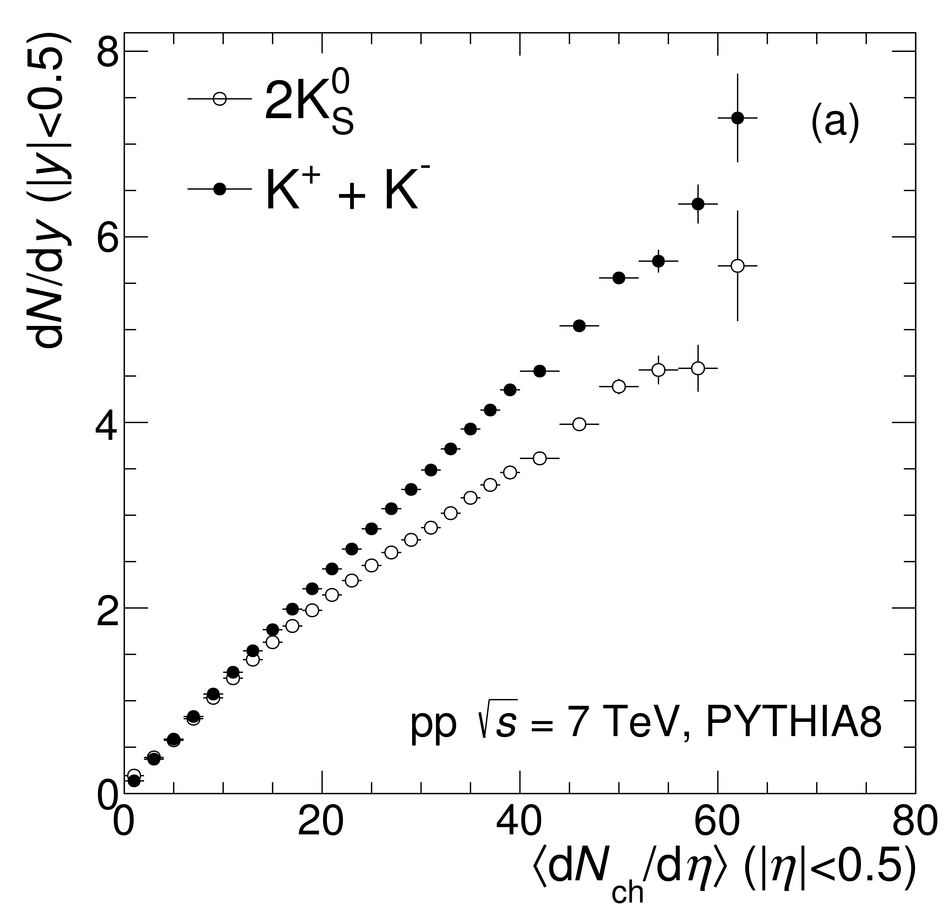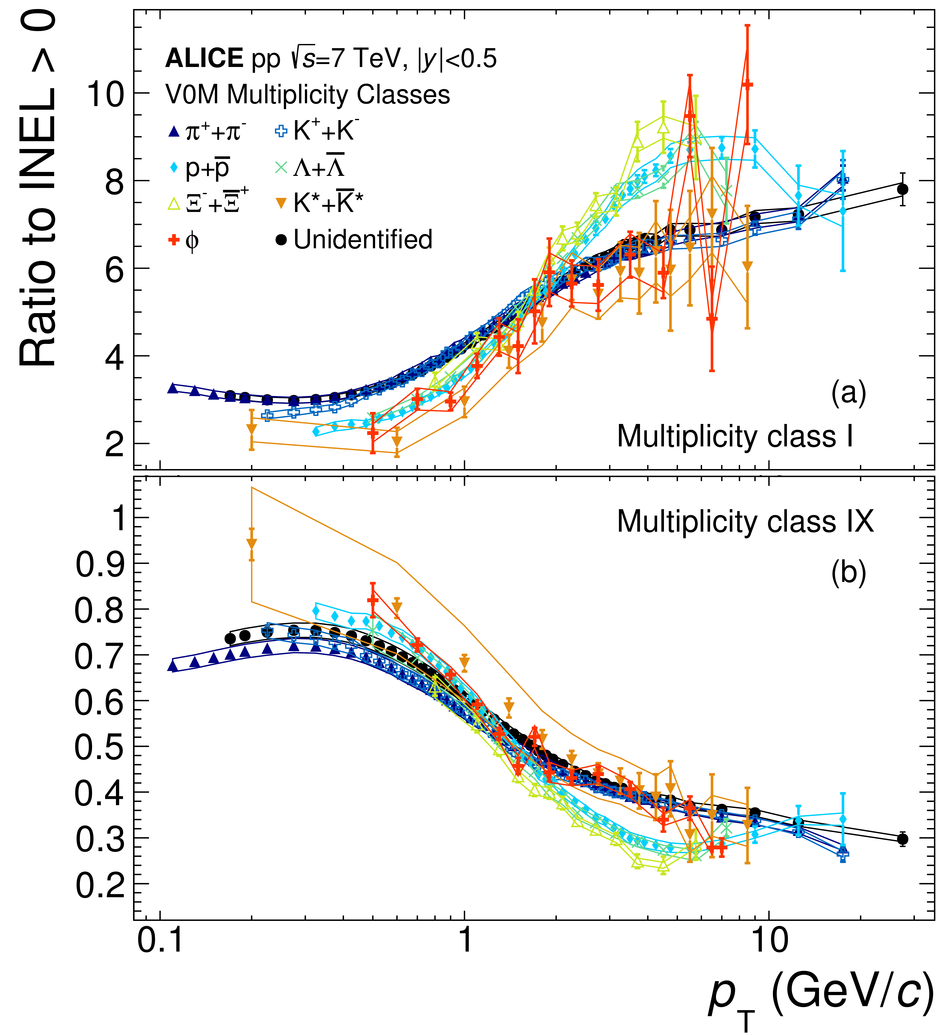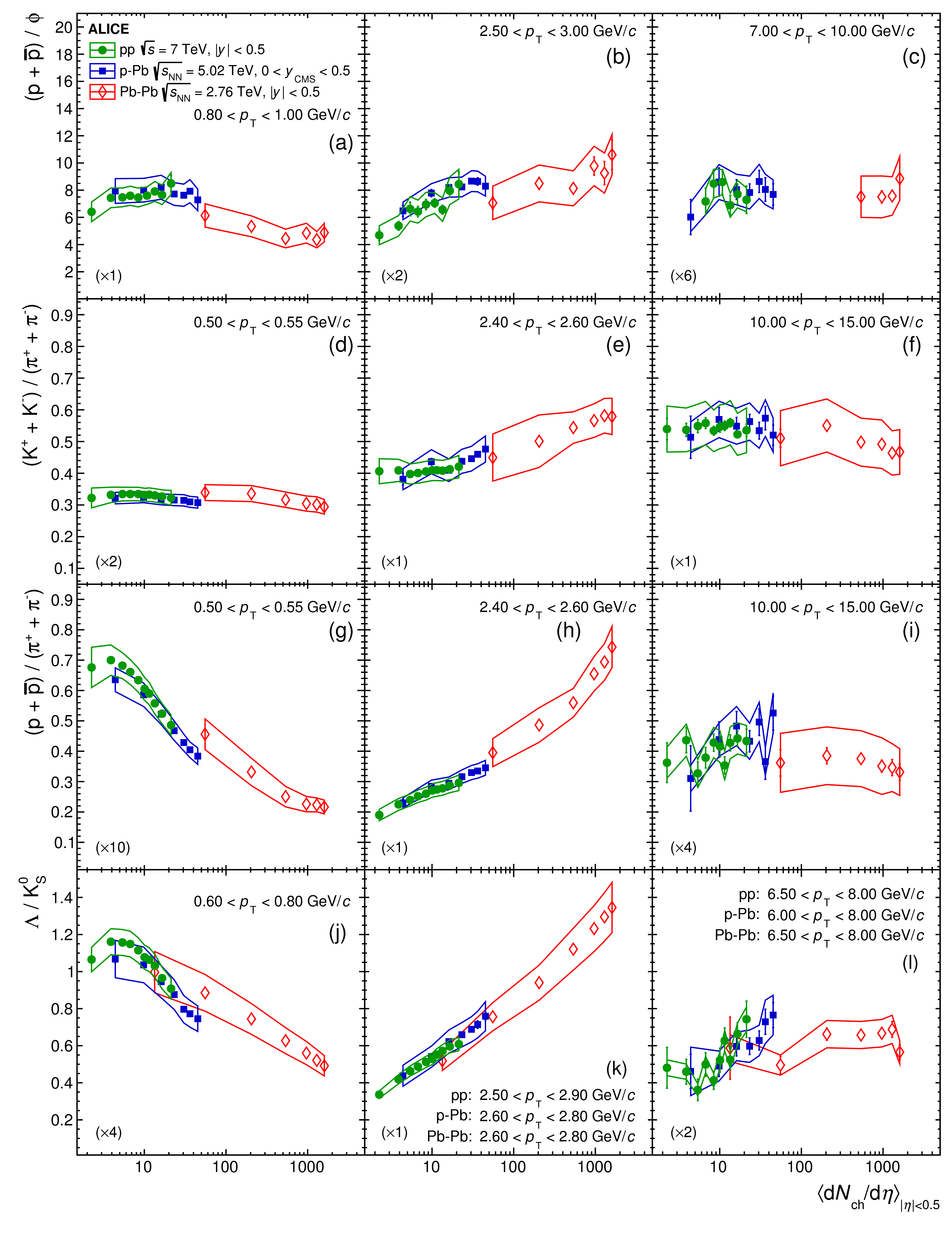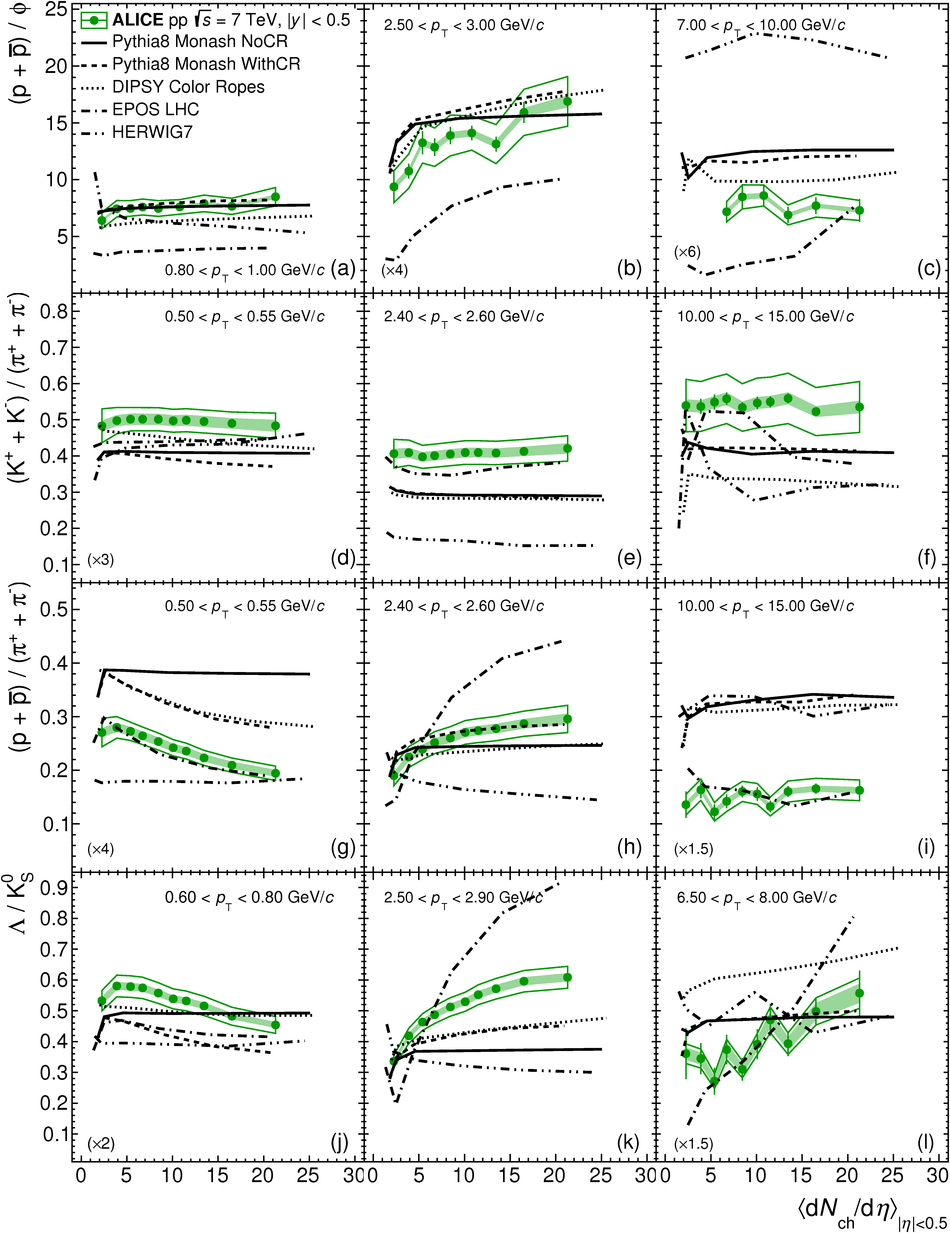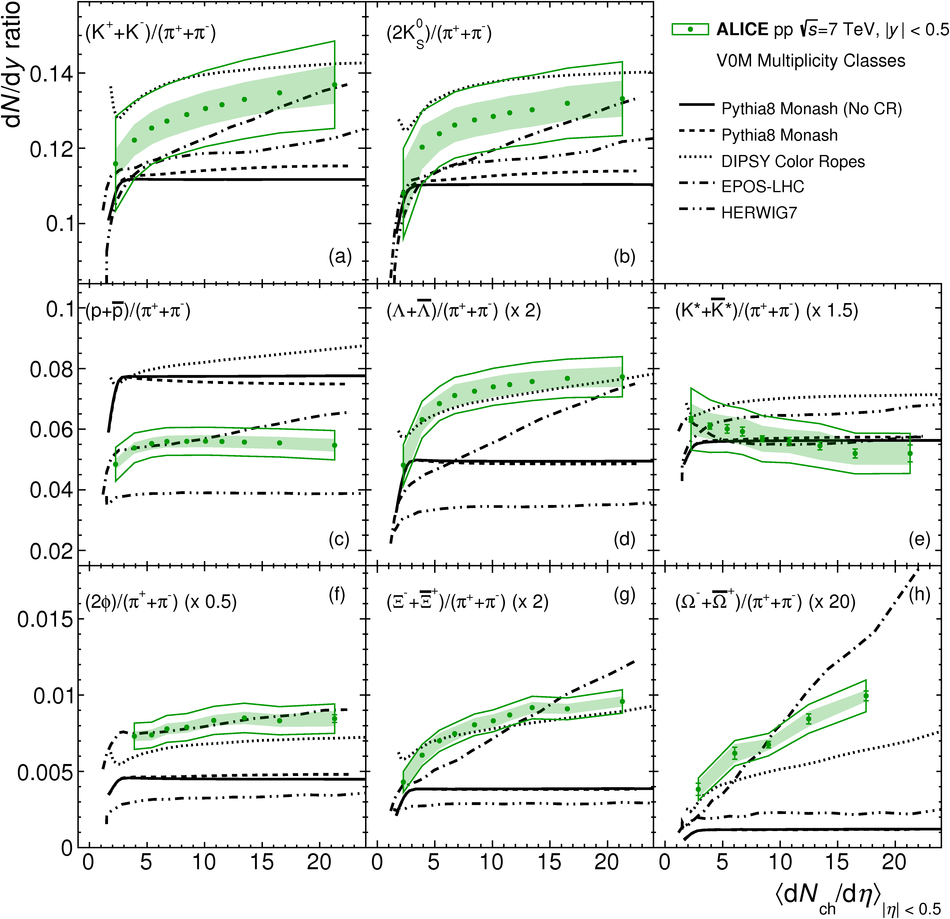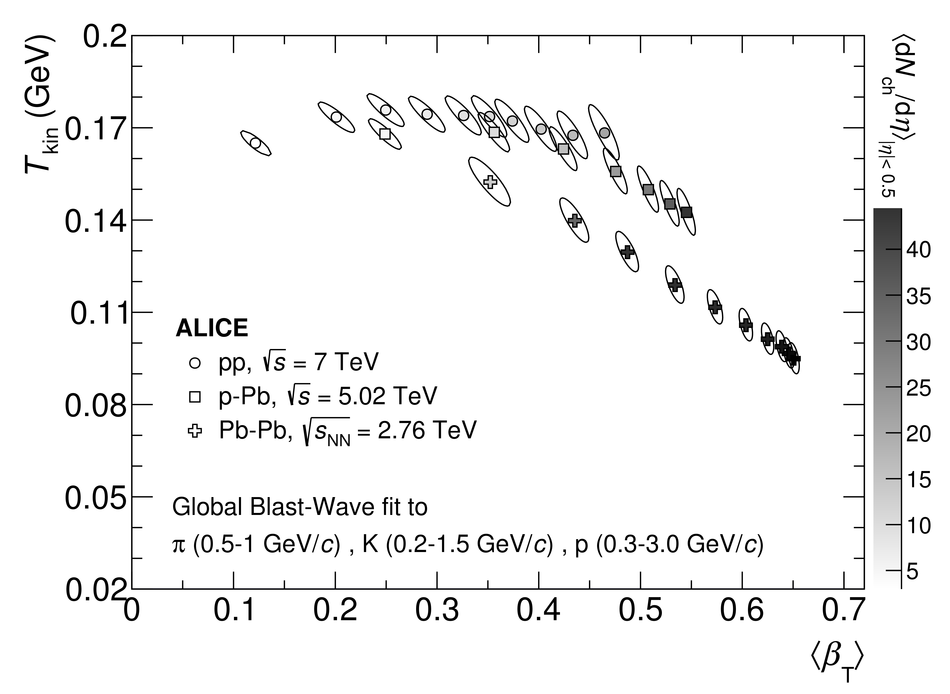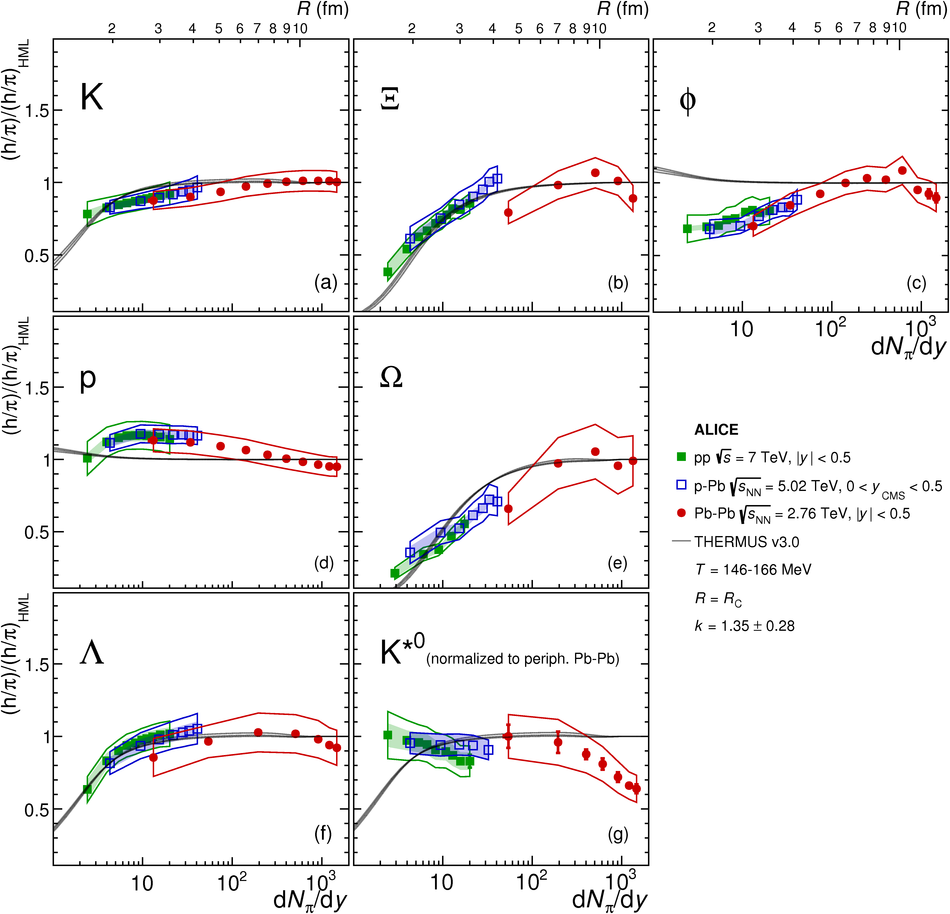Comprehensive results on the production of unidentified charged particles, $\pi^{\pm}$, $\rm{K}^{\pm}$, $\rm{K}^{0}_{S}$, $\rm{K}$*(892)$^{0}$, $\rm{p}$, $\overline{\rm{p}}$, $\phi$(1020), $\Lambda$, $\overline{\Lambda}$, $\Xi^{-}$, $\overline{\Xi}^{+}$, $\Omega^{-}$ and $\overline{\Omega}^{+}$ hadrons in proton-proton (pp) collisions at $\sqrt{s}$ = 7 TeV at midrapidity ($|y| <~ 0.5$) as a function of charged-particle multiplicity density are presented. In order to avoid auto-correlation biases, the actual transverse momentum ($p_{\rm{T}}$) spectra of the particles under study and the event activity are measured in different rapidity windows. In the highest multiplicity class, the charged-particle density reaches about 3.5 times the value measured in inelastic collisions. While the yield of protons normalized to pions remains approximately constant as a function of multiplicity, the corresponding ratios of strange hadrons to pions show a significant enhancement that increases with increasing strangeness content. Furthermore, all identified particle to pion ratios are shown to depend solely on charged-particle multiplicity density, regardless of system type and collision energy. The evolution of the spectral shapes with multiplicity and hadron mass shows patterns that are similar to those observed in p-Pb and Pb-Pb collisions at LHC energies. The obtained $p_{\rm{T}}$ distributions and yields are compared to expectations from QCD-based pp event generators as well as to predictions from thermal and hydrodynamic models. These comparisons indicate that traces of a collective, equilibrated system are already present in high-multiplicity pp collisions.
Phys. Rev. C 99, 024906
HEP Data
e-Print: arXiv:1807.11321 | PDF | inSPIRE
CERN-EP-2018-209

